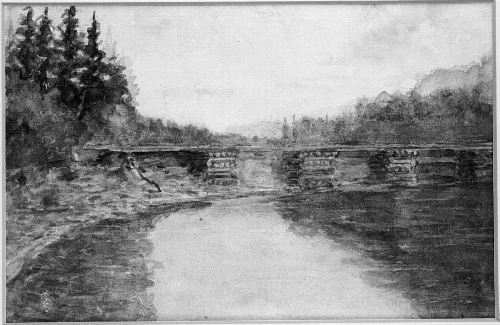While many whitewater rivers exist throughout the Adirondack park, none are as well known or as well documented as the Hudson River. The Hudson River is also one of the longest rivers in the Adirondack park, running centrally within park boarders. It was the first whitewater river discovered in the Adirondacks. The Hudson has been used for everything from transportation to hydroelectric power. Now, the Hudson River is the point of concentration for many river restoration activists as well as a huge whitewater recreational destination. For that reason, we are exemplifying the Hudson River as a representation of the whitewater rivers throughout the Adirondack Park.
Sediment analyses of the Hudson River conducted by scientists at the Cary Institute of Ecosystem Studies dates human – specifically Native American - use of the river back 8,000 years (Hudson River Geography). However, more recent history explains how the Hudson obtained its name. In 1609, Captain Henry Hudson sailed to the Adirondacks on one of the largest white water rivers in Eastern North America (Henry Hudson – An Englishman in Dutch Service). The English captain named the river after himself and thus it has been known as the Hudson River ever since.
Since then, the Hudson has been a source for many conflicts and innovations. During the Revolutionary War and throughout the 1700’s, American continental soldiers fought to fortify West Point and prevent British access of the Hudson River. American and British soldiers alike built forts along Lake Champlain (Lake Champlain feeds directly into the Hudson River) in order to create strongholds to win Revolutionary War. A century later, the steamboat was invented (1807) and used for travel along the Hudson in the mid/late-1800’s (Haynes). More recently, the Hudson was harnessed for its hydroelectric power. Harnessing the Hudson has been one of the most controversial decisions of the 20th century Adirondack history and is an emerging case study for local whitewater river activism. More information can be found on this page here (use the hyperlink to the Subtopic Page: Evolution of Hydroelectric Power page).
In 1962, the Hudson River became a focal point for environmental activism. The corporation Con Edison proposed building a giant hydro-electric plant on the river and began building without approval from the Federal Power Commission. This lead to more discussion of Con Edison’s proposal and prompted the formation of the National Environmental Policy Act of 1969 (Haynes). Eventually, in 1970, the government gave permission to Con Ed to build the hydro-electric Storm Plant. While efforts initially to repeal the decision failed, river advocates continued to work to remove the Storm Plant. After Con Ed came under new leadership, appeals continued to flow in, the company agreed to give up the fight and turned the area designated for a hydroelectric plant into park land (Haynes).
The Hudson River remains polluted by bacteria and left-over toxic chemicals. General Electric spent years dumping chemicals into the water, including PCBs, from its two plants along the Hudson. PCBs, or Polychlorinated Biphenyls, are chlorinated hydrocarbons applied in electrical uses, heat transfer and hydraulic equipment. PCBs are linked with cancer and have been banned by the Environmental Protection Agency since 1979 (“Polycarbonate Biphenyls”, 2013). The New York Environmental Protection Agency website found here (use this link in the hyperlink http://www.epa.gov/hudson/cleanup.html) details clean up efforts because of the Environmental Policy Act (1969) and the Clean Water Act (1972), but also states future efforts needed to return the Hudson to a clean, stable ecosystem (How is the Hudson Doing?). The Hudson River provides an accurate depiction of human pollution to whitewater rivers in the Adirondacks. However, the Hudson River also serves a representation of human contamination cleanup efforts, from a governmental and local perspective.

The Hudson River at Lower Works Watercolor Painted by Robertson, Contributed by Arthur Crocker (Tahawus Club)
Sources
Haynes, Rebecca. "Explore The Hudson Valley's Rich History: A Region Steeped in History Preserves Its Past." Historic Hudson River Towns. Historic Hudson River Towns, Inc, n.d. Web. 6 Mar. 2015.
"Henry Hudson - An Englishman In Dutch Service." American History - From Revolution to Reconstruction. University of Gronigen, 1994. Web. 6 Mar. 2015.
"How Is the Hudson Doing?" New York State Department of Environmental Conservation. New York State Department of Environmental Conservation, 2015. Web. 6 Mar. 2015.
"Hudson River Geography." Cary Institute. Cary Institute of Ecosystem Studies, 2015. Web. 6 Mar. 2015.
